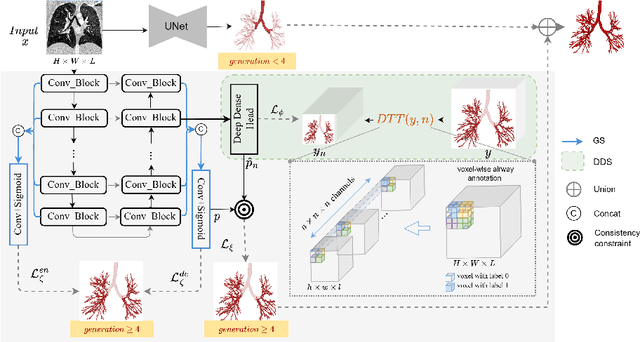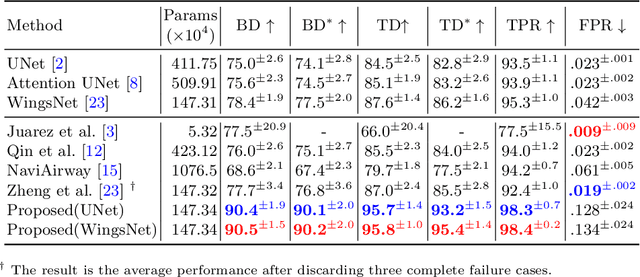Mingyue Zhao
3DGR-CAR: Coronary artery reconstruction from ultra-sparse 2D X-ray views with a 3D Gaussians representation
Oct 01, 2024Abstract:Reconstructing 3D coronary arteries is important for coronary artery disease diagnosis, treatment planning and operation navigation. Traditional reconstruction techniques often require many projections, while reconstruction from sparse-view X-ray projections is a potential way of reducing radiation dose. However, the extreme sparsity of coronary arteries in a 3D volume and ultra-limited number of projections pose significant challenges for efficient and accurate 3D reconstruction. To this end, we propose 3DGR-CAR, a 3D Gaussian Representation for Coronary Artery Reconstruction from ultra-sparse X-ray projections. We leverage 3D Gaussian representation to avoid the inefficiency caused by the extreme sparsity of coronary artery data and propose a Gaussian center predictor to overcome the noisy Gaussian initialization from ultra-sparse view projections. The proposed scheme enables fast and accurate 3D coronary artery reconstruction with only 2 views. Experimental results on two datasets indicate that the proposed approach significantly outperforms other methods in terms of voxel accuracy and visual quality of coronary arteries. The code will be available in https://github.com/windrise/3DGR-CAR.
Skeleton Supervised Airway Segmentation
Mar 11, 2024



Abstract:Fully-supervised airway segmentation has accomplished significant triumphs over the years in aiding pre-operative diagnosis and intra-operative navigation. However, full voxel-level annotation constitutes a labor-intensive and time-consuming task, often plagued by issues such as missing branches, branch annotation discontinuity, or erroneous edge delineation. label-efficient solutions for airway extraction are rarely explored yet primarily demanding in medical practice. To this end, we introduce a novel skeleton-level annotation (SkA) tailored to the airway, which simplifies the annotation workflow while enhancing annotation consistency and accuracy, preserving the complete topology. Furthermore, we propose a skeleton-supervised learning framework to achieve accurate airway segmentation. Firstly, a dual-stream buffer inference is introduced to realize initial label propagation from SkA, avoiding the collapse of direct learning from SkA. Then, we construct a geometry-aware dual-path propagation framework (GDP) to further promote complementary propagation learning, composed of hard geometry-aware propagation learning and soft geometry-aware propagation guidance. Experiments reveal that our proposed framework outperforms the competing methods with SKA, which amounts to only 1.96% airways, and achieves comparable performance with the baseline model that is fully supervised with 100% airways, demonstrating its significant potential in achieving label-efficient segmentation for other tubular structures, such as vessels.
GDDS: Pulmonary Bronchioles Segmentation with Group Deep Dense Supervision
Mar 16, 2023



Abstract:Airway segmentation, especially bronchioles segmentation, is an important but challenging task because distal bronchus are sparsely distributed and of a fine scale. Existing neural networks usually exploit sparse topology to learn the connectivity of bronchioles and inefficient shallow features to capture such high-frequency information, leading to the breakage or missed detection of individual thin branches. To address these problems, we contribute a new bronchial segmentation method based on Group Deep Dense Supervision (GDDS) that emphasizes fine-scale bronchioles segmentation in a simple-but-effective manner. First, Deep Dense Supervision (DDS) is proposed by constructing local dense topology skillfully and implementing dense topological learning on a specific shallow feature layer. GDDS further empowers the shallow features with better perception ability to detect bronchioles, even the ones that are not easily discernible to the naked eye. Extensive experiments on the BAS benchmark dataset have shown that our method promotes the network to have a high sensitivity in capturing fine-scale branches and outperforms state-of-the-art methods by a large margin (+12.8 % in BD and +8.8 % in TD) while only introducing a small number of extra parameters.
 Add to Chrome
Add to Chrome Add to Firefox
Add to Firefox Add to Edge
Add to Edge